Today’s article contains game-long spoilers for Drakengard 3. Nothing too specific, but it does kind of spoil the ultimate finale of the game, so, ya know, you’ve been warned.
 A long time ago in a Snick long forgotten, my mother watched an episode of Ren & Stimpy with a wee Goggle Bob. This was unusual, as, while my mother usually did her best to watch what I was watching (we both enjoyed Clarissa Explains it All quite a bit), she didn’t (and still doesn’t) really like “cartoons” at all. So, one way or another, this was likely the first my mother sat and down and actually watched a complete Ren & Stimpy episode. The episode (The Big Baby Scam… I can remember almost all early Nicktoon episodes because they were rerun constantly) was a typical Ren & Stimpy jaunt, and ended with a pair of menacing babies punching the daylights out of Ren Höek. I was laughing uproariously, and my mother… was not impressed. I asked her why, and her response still sticks in my mind.
A long time ago in a Snick long forgotten, my mother watched an episode of Ren & Stimpy with a wee Goggle Bob. This was unusual, as, while my mother usually did her best to watch what I was watching (we both enjoyed Clarissa Explains it All quite a bit), she didn’t (and still doesn’t) really like “cartoons” at all. So, one way or another, this was likely the first my mother sat and down and actually watched a complete Ren & Stimpy episode. The episode (The Big Baby Scam… I can remember almost all early Nicktoon episodes because they were rerun constantly) was a typical Ren & Stimpy jaunt, and ended with a pair of menacing babies punching the daylights out of Ren Höek. I was laughing uproariously, and my mother… was not impressed. I asked her why, and her response still sticks in my mind.
“I just don’t think violence is funny.”
This rocked my young mind. I am not, nor was I, a psychopath, so, of course, I shared the same belief. Violence is violence, it is bad. But, as far as I reasoned, this was not “violence”, it was Ren & Stimpy. It was a silly cartoon about a dog and a cat and their harebrained schemes to, what was it again? Oh yes, to live. Okay, yeah, if you think about Ren & Stimpy for a moment, it is kind of horrifying, because many episodes are just about two stray animals desperately trying to find a place to live and belong. But then, the next episode, they’re space cadets out in the universe, and isn’t Stimpy a silly kitty? Never mind that practically every episode ends with either Ren slapping Stimpy or Ren being punished by the universe for being Ren, they’re just a couple of inane cartoon animals, no “violence” here.
And, obviously, that’s bullshit.
This has long been the rallying cry of pearl-clutchers everywhere, but cartoons do normalize violence. There’s hitting, there’s falling down, and there are any number of “whacky” firearms being blasted all over the place. I’m pretty sure the average American can simply close their eyes and relive the “Daffy has his beak blown around” image from Looney Tunes. And, on one hand, who cares, it’s funny. On the other hand, it’s a sentient creature being shot in the face. That is not normal. That is upsetting. But it’s a cartoon, so it practically becomes a part of our cultural identity. And, as someone who watches a lot of cartoons, I want to say there’s nothing wrong with that. Kids are smarter than they’re often given credit for, and it’s not hard to discern the difference between Elmer Fudd and an actual threat with a gun. I haven’t ever seen a real life anvil dropped on a random person, so I’m pretty sure our society has survived the last few decades of “animated violence”. The kids are alright.
And then we get into videogames.
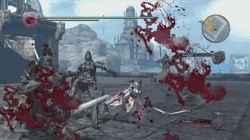 I don’t need to rehash the whole “violent videogames” angle, do I? We’ve all heard the debates, and we’ve all dealt with at least one family member or friend that thinks you’re going to “go Columbine” because you play murder simulators. It’s crazy, right? We all agree there? We don’t play violent videogames because they’re violent, or to learn violence; we play violent videogames because that’s how videogames interpret the world. Call of Duty or Splatoon, who cares? What’s the difference between a virtual gun and a virtual water gun? They’re both just as ineffective on that damn cat with the flags, so let’s get over this whole “videogame violence” thing. Videogames are good for you! Now sit down and finish your Mary-Kate and Ashley: Magical Mystery Mall!
I don’t need to rehash the whole “violent videogames” angle, do I? We’ve all heard the debates, and we’ve all dealt with at least one family member or friend that thinks you’re going to “go Columbine” because you play murder simulators. It’s crazy, right? We all agree there? We don’t play violent videogames because they’re violent, or to learn violence; we play violent videogames because that’s how videogames interpret the world. Call of Duty or Splatoon, who cares? What’s the difference between a virtual gun and a virtual water gun? They’re both just as ineffective on that damn cat with the flags, so let’s get over this whole “videogame violence” thing. Videogames are good for you! Now sit down and finish your Mary-Kate and Ashley: Magical Mystery Mall!
But do you ever really sit down and think about what you’re doing in a videogame? Let’s look at Final Fantasy 1, a game I want to say no parents’ organization has ever challenged (though I’d be amused to hear otherwise). On the surface you’ve got four kinda goofy looking dudes with swords and nunchucks traipsing across a medieval countryside occasionally making imps fall down. No big deal there. But then consider what actually happens in that game. The Light Warriors venture from Corneria to the next town over… an event that involves random encounters every seven steps, and each battle including one to nine different beasts. Our protagonists kill these creatures as easily as breathing, and chug magic drugs whenever they need to feel a little better. Along the way, they meet a blind old woman that lives alone in a cave… and then the heroes keep walking. Shortly thereafter, the gang arrives in Pravoka, determines they need a boat, and kill nine guys until the survivors give them a boat. Then they set sail for another land, and, aside from maybe returning to loot the place, the good people of Pravoka never see the Light Warriors ever again. They don’t even come back to patronize what I’m sure is a fine inn and ocean-side tourist stops.
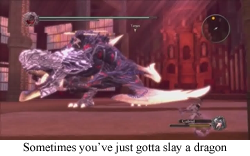 What I’m saying is that the Light Warriors are the real monsters.
What I’m saying is that the Light Warriors are the real monsters.
But this kind of inhumanity is the standard for most videogames. Children are suffering? Well, I’ll help them if they offer me a cool reward for their stupid little quest. Local economies live or die according to my weapon purchases? Well, I bought everything in this stupid little town, there’s no reason to come here ever again. And the monster thing? Have you ever considered how many species have been driven to extinction thanks to well-meaning heroes? Even a “kiddy” game like Pokémon involves walking through any given forest and knocking every last critter in your path into unconsciousness. That is not the sign of a well mind; that is an early warning sign for a serial killer.
Yoko Taro, a videogame director and writer, seemed to notice this. This thesis permeated his first big game, Drakengard. Unfortunately, Drakengard had a few problems, chief among them that it is about as fun to play as boiling your own eyelids. But then we got Taro’s Nier, a game that is totally bonkers, but actually fun to play. Unfortunately, the moral of Nier ultimately boiled down to “even the most virtuous hero is someone else’s villain”, which is an excellent lesson, but one that requires an actually chivalrous protagonist. The titular Nier is a dedicated father (or brother) who is unerringly kind to the various freaks that seem to populate his world. Assuming you’re not a damnable shadow creature, Nier is good to you, and, while this makes much of his life that much more of a tragedy, it also makes him (possibly over) sympathetic. Nier does what may be judged as bad things, but he does them for reasons that make sense to the player.
This cannot stand.
Zero is the heroine of Drakengard 3. Zero is also an asshole.
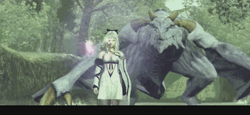 Drakengard 3 is the story of six sisters. All six sisters have overwhelming magical powers, and five of them decided to share these powers with everyone and rule justly and fairly in an effort to promote the betterment of mankind. And the sixth sister? Well, that’s Zero, and she decided to use her powers to kill her five sisters and every single man, woman, and centaur in between. She technically has a good reason for doing this, but she’s not big into sharing, so there isn’t much hope for a peaceful resolution. And, spoilers, like most videogame protagonists, she has little trouble achieving her goals. Basically, the simple act of popping the Drakengard 3 disc into your PS3 sets off a chain reaction that leads to the death of thousands across multiple universes. Though I guess Zero does manage to accomplish her murderous goals, so, uh, thanks for playing?
Drakengard 3 is the story of six sisters. All six sisters have overwhelming magical powers, and five of them decided to share these powers with everyone and rule justly and fairly in an effort to promote the betterment of mankind. And the sixth sister? Well, that’s Zero, and she decided to use her powers to kill her five sisters and every single man, woman, and centaur in between. She technically has a good reason for doing this, but she’s not big into sharing, so there isn’t much hope for a peaceful resolution. And, spoilers, like most videogame protagonists, she has little trouble achieving her goals. Basically, the simple act of popping the Drakengard 3 disc into your PS3 sets off a chain reaction that leads to the death of thousands across multiple universes. Though I guess Zero does manage to accomplish her murderous goals, so, uh, thanks for playing?
Taken on its own, Zero is not doing anything different from any other videogame, particularly those in the Dynasty Warriors vein. Zero enters the battlefield, cuts down a number of anonymous soldiers, maybe beats a mythological creature or two (minotaur, cerberus, whatever), and moves on to a boss that likely has a “human form” and then a colossal “monster form”, though feel free to reverse that order here and there. When it’s all over and everybody (and I mean everybody) is dead, then we discover that this whole “evil Zero” thing was some kind of smear campaign gone wrong, and Zero actually saved the world. Hooray for our side, trophies for everybody!
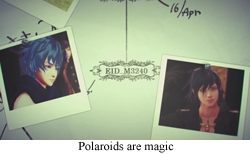 But the devil is in the details here, and Zero is not afraid to reinforce her own negative self-image. Hell, there’s a reason she named herself “nothing”. This is a woman that kills, enjoys it, and then kills some more. At one point, she relays her whole sad backstory, but her narration is over a flashback of her slaughtering a small town’s worth of soldiers. The massacre has nothing to do with her tale, it’s just, ya know, how that woman thinks. She’s got a mind for murder, and murder on her mind.
But the devil is in the details here, and Zero is not afraid to reinforce her own negative self-image. Hell, there’s a reason she named herself “nothing”. This is a woman that kills, enjoys it, and then kills some more. At one point, she relays her whole sad backstory, but her narration is over a flashback of her slaughtering a small town’s worth of soldiers. The massacre has nothing to do with her tale, it’s just, ya know, how that woman thinks. She’s got a mind for murder, and murder on her mind.
And then there are her companions. Not unlike a JRPG, Zero has a party of acolytes that join her quest as the game progresses. Team Zero thus ultimately consists of:
- A sadist that believes all ugly things must be killed. Side note: he believes everything is ugly.
- A masochist that derives sexual pleasure from the tiniest implications of abuse. He was previously in a relationship with a very vocal virgin, so, to say the least, he’s a little repressed.
- A perverted old man that, should he think and talk about sex any more than he already does, will accidentally invent Star Trek.
- A pretty boy that is all beauty and no brains. Presumably because people have a tendency to always listen to the most attractive person in the room, he is constantly inventing “fun facts” that are, in fact, not all that factual.
Do any of these fellows sound like role models? Hell, do any of these guys sound like someone you’d like to share a continent with? I’ve got nothing against sadists, masochists, satyriasists, and dumbasses, but there’s a difference between extracting pleasure from pain and that being your only personality trait. But, here we are, four dudes that are almost entirely defined by their base desires, and they’re “your” party. Choose your favorite two for the battlefield. You’ll be relying on them for your life!
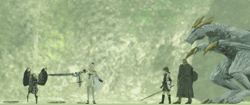 And it’s in this manner that Taro accomplishes his goal. Zero and her amazing friends are all joined by one basic, mutual hypothesis: they all like killing. They all like it a lot. And you like it, too, don’t you? What’s that, you don’t like violence? No, that can’t be right, you just murdered about three hundred people in ten minutes, and this is the eighth time you’ve done it. You claim you won’t kill again? Bullshit, you’ll start the next mission and kill the next boatload of people, because you want to see how the story ends, don’t you? You want the achievements? You want the upgraded weapons? Ha, you’re just like this dork over here that’s masturbating over a corpse. Who cares if you’re doing it for EXP or to ride the baloney pony, you’re still killing like a psychopath, and you’re going to keep doing it because you enjoy it. You enjoy violence.
And it’s in this manner that Taro accomplishes his goal. Zero and her amazing friends are all joined by one basic, mutual hypothesis: they all like killing. They all like it a lot. And you like it, too, don’t you? What’s that, you don’t like violence? No, that can’t be right, you just murdered about three hundred people in ten minutes, and this is the eighth time you’ve done it. You claim you won’t kill again? Bullshit, you’ll start the next mission and kill the next boatload of people, because you want to see how the story ends, don’t you? You want the achievements? You want the upgraded weapons? Ha, you’re just like this dork over here that’s masturbating over a corpse. Who cares if you’re doing it for EXP or to ride the baloney pony, you’re still killing like a psychopath, and you’re going to keep doing it because you enjoy it. You enjoy violence.
And maybe that’s not a good thing.
Of course, I’ve neglected to mention the first and youngest member of Zero’s posse. Mikhail is a dragon, and, because his previous form, Michael, was recently killed, he’s technically little more than an infant. As a wee (giant) dragon baby, Mikhail has the mind of a child, and a… less than complete understanding of his mistress. Mikhail believes that Zero should try to solve this problem by peacefully reconciling with her sisters, and she absolutely should not kill every person she encounters. Zero doesn’t listen, but, even though he aids Zero time and time again, Mikhail persists with his cries for pacifism. Yes, he does fight, but it’s defensively, and he actively notes that he’s not enjoying it, and he would rather not be doing this if there were any other way.
And he’s the only character that survives Drakengard 3. He’s the only character that survives after participating in the biggest, most annoying challenge on the PS3 that is, incidentally, entirely based on being defensive. All the violence up to this point has been easy, not solving your problems with swords and fire breath is hard.
That makes a bit of an impact.
 So maybe Mom and Yoko Taro are right. Maybe there is something to this whole violence in media thing. Maybe it doesn’t make an impact on our minds, maybe it does. Who knows? All I do know is that most media is content to be “don’t worry about it, it’s just a fantasy”, while Drakengard 3 proudly states, “you like violence? Then there might be something wrong with you.” It’s not the worst judgment, after all, this band of freaks did save their world (after a fashion), but it is something to consider.
So maybe Mom and Yoko Taro are right. Maybe there is something to this whole violence in media thing. Maybe it doesn’t make an impact on our minds, maybe it does. Who knows? All I do know is that most media is content to be “don’t worry about it, it’s just a fantasy”, while Drakengard 3 proudly states, “you like violence? Then there might be something wrong with you.” It’s not the worst judgment, after all, this band of freaks did save their world (after a fashion), but it is something to consider.
Anyway, next week is going to be… Mortal Kombat (9ish) for the PS3? Seriously, ROB? Okay, now you’re just screwing with me.
FGC #284 Drakengard 3
- System: Playstation 3. Exclusive? Yeah, that’s gonna move a lot of systems.
- Number of players: It might be neat to get some two player disciple action, but, nope,
Zeroone player. - What’s in a name: The Drakengard franchise is known as “Drag-on Dragoon” in Japan. I cannot tell you how much I prefer that title (it’s a lot).
- Favorite Disciple: This isn’t usually my preference, but I’m going to go with pretty boy Cent as my favorite. He seems to be the most active of the disciples before his official turn to Zero’s side, and he might be the… least crazy member of the party. Then again, he also summons a magical spider creature almost by accident, and that can’t be completely sane.
- Backstory: Oh yeah, never read the backstory for Zero. I cannot stress this enough. It’s basically written by Frank Miller. Modern Frank Miller. Avoid at all costs.
 Ladies’ Night: I could probably write an entire other article on the sexual politics of this game… but I’m not sure if I’d ever reach a conclusion. On one hand, the women rule this world, and there is not a single male that isn’t, in some way, a servant to a woman. That’s cool and oddly feminist for a Japanese game. On the other hand, those powerful women seem to be designed exclusively to check off boxes for various fetishes (like a certain other franchise), so only Zero and One (binary!) come off as “real” characters. Otherwise, you’ve just got nymphy, virgin, lolita, and crazy. Mind you, I haven’t played the DLC, so I don’t know if there is more “shading” there, but, as is, it’s a disappointing turn.
Ladies’ Night: I could probably write an entire other article on the sexual politics of this game… but I’m not sure if I’d ever reach a conclusion. On one hand, the women rule this world, and there is not a single male that isn’t, in some way, a servant to a woman. That’s cool and oddly feminist for a Japanese game. On the other hand, those powerful women seem to be designed exclusively to check off boxes for various fetishes (like a certain other franchise), so only Zero and One (binary!) come off as “real” characters. Otherwise, you’ve just got nymphy, virgin, lolita, and crazy. Mind you, I haven’t played the DLC, so I don’t know if there is more “shading” there, but, as is, it’s a disappointing turn.- Did you know? Oh, and speaking of which, Taro apparently told the character designers to look to Puella Magi Madoka Magica for tips on character design. Now I can’t unsee half the sisters being obvious MM “homages”. Though I suppose a MM/D3 crossover is more likely now…
- Would I play again? Maybe… I guess. This is a lot more fun than Drakengard 1, but, on the other hand, it’s not as fun as Nier, so….
What’s next? Random ROB already chose Mortal Kombat for some reason, presumably because he’s an evil robot and is not to be trusted. So, anyway, violence for violence’s sake. Please look forward to it!

[…] Favorite Song: And after an entire article extolling the joys of Final Fantasy music, I’m going to go ahead and name Chrono Trigger (The Theme from Chrono Trigger) as my favorite tune. What? Be glad I didn’t choose something from Nier! […]
[…] got initial approval. I mean, come on, it must not have been that hard to sell Square-Enix on “sexy lady commits wanton violence” and “sexy lady commits wanton violence, but now with a cuter butt”. “Weird” is relegated […]